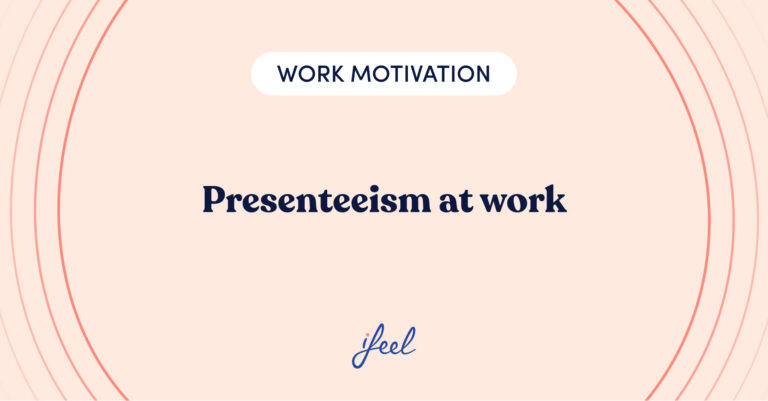Internal mobility is the idea that the right person for a vacant job exists within the company. When done right, this practice saves companies the valuable time and resources searching outward for a new employee generally takes. The hiring process becomes much easier for all intents and purposes if someone already in the company is selected.
What is internal mobility?
Internal mobility is the process by which vacancies in the company are filled by existing personnel rather than people outside the company.
Should it be prioritized?
No. Whether internal mobility should be prioritized depends on the company’s needs and the resources available to meet them at a given time. It should be prioritized, particularly when the company wishes to economize AND when the right person for a position is already part of it.
What are the advantages of internal mobility?
Internal mobility not only optimizes company resources and retains talent, but it also allows employees to advance professionally. Research by LinkedIn shows that “Employee intent to stay is also 33% higher at organizations where internal mobility is encouraged”.
Are there different types of internal mobility?
Of course, there are. One aspect that generates differences is whether the worker’s conditions improve, remain the same, or worsen with the change of position within the organization.
Why promote internal mobility in the workplace?
When considering the advantages of internal mobility, it is essential to consider the perspective of the employees who can benefit from it. Some of the top reasons employees leave their companies are that they struggle to develop professionally and that they struggle to maintain their well-being in the workplace.
Detrimental workplace-related phenomena like the glass ceiling, burnout, and chronic and/or acute work stress can drive many employees to leave a company.
This may not always occur because of an economic crisis or a frustrating isolated incident with the company. Instead, it may occur because of a clear inconsistency between the company’s method of meeting its needs and the employee’s method of meeting their needs.
In this sense, internal mobility in the workplace can be a smart strategy for both employees and organizations: it helps to avoid talent drain and premature departure from a company where the link is perhaps substantially positive, enhancing the adaptation of all those involved to a context of difficulties.

Types of internal mobility
Internal mobility can be viewed from different angles, such as its results, duration, and implications for working conditions.
1. Effective vs. ineffective internal mobility
As obvious as it sounds, this classification reminds us that internal mobility is not an end in itself, but a means to benefit both the company and its employees. If it succeeds, it is effective. If it fails, it must be corrected to be effective.
2. Permanent vs. temporary internal mobility
Many companies choose to relocate their employees to fill existing vacancies or at least provide it as an option before the external selection process is opened. This can happen in the event of a long-term expectation or in the event that there is a specific need that must be met, after which everyone returns to the position to which they had initially been assigned.
3. Horizontal vs. vertical internal mobility
Vertical internal mobility refers to an employee rising in the workplace hierarchy, increasing their responsibilities, and improving their economic status. On the other hand, a job position transition does not imply a substantial change regarding horizontal internal mobility.
Why opt for internal mobility?
As indicated above, the most effective way to take advantage of internal mobility when implementing this recruitment model is to consider the perspectives of both corporate and employees.
1. Company motives
– A company does not have the financial resources to integrate new personnel and so wishes to take advantage of its existing human resources.
– A company wishes to restructure its current workforce without altering the size: it is not struggling financially, nor is it experiencing a talent shortage, but it would like to tackle the existing company structure differently.
– A company wishes to use internal mobility as a technique to retain talent. Occasionally some employees threaten to leave the company, mainly due to a lack of motivation but will decide to stay if offered a good opportunity by the company.
2. Employee motives
– They wish to further their professional development due to feelings of stagnation within the company but still consider that this organization is the most suitable for them at this time.
– They follow a business decision aimed at addressing a specific corporate need. Not all employees change positions or departments voluntarily, but they assume that it is what the company needs at the time and agree to it
– They hope to improve their psychological well-being. Beyond the desire to boost their professional development, some employees want to remain in their company but believe another position would improve their quality of life.

Emotional well-being for companies
At ifeel, we strive to ensure that you and your colleagues can benefit from our global emotional well-being program for companies, designed by our team of expert psychologists in well-being at work. This collaboration allows managers in the People, Talent, and Human Resources area to receive personalized, data-based advice on the best care for the psychological well-being of the teams under their charge.
Do you belong to your organization’s Human Resources department? Try our program now to see how it could help you.
In addition, our program offers all employees a complete mental health care service that includes emotional support and online therapy with one of our professionals.
Moreover, in our Resources section, you can find different materials, such as Podcasts, HR Guides on various topics (e.g., employee experience or how to design a good HR strategy), or Interviews with leading HR managers. In addition, we have a Psychosocial Risk Factors Template, which you can use to comply with the requirements of the Labor Inspection.
We hope you found this post on types of internal mobility interesting. If you would like more information about our emotional well-being program for companies, all you have to do is request it, and we will contact your team as soon as possible.
What is internal mobility at work?
Internal mobility refers to the movement of employees within an organization to different roles, departments, or locations, providing opportunities for career growth and development without requiring them to leave the company.
Why is internal mobility important?
Internal mobility is important as it helps organizations retain and develop talent, increases employee engagement and satisfaction, fosters a culture of learning and growth, and can address skill gaps by leveraging existing employees’ knowledge and expertise.
How can employees explore internal mobility opportunities?
Employees can explore internal mobility opportunities by staying informed about job postings and internal openings, networking within the organization, expressing their career goals and aspirations to managers or HR, and taking advantage of development programs and training that can enhance their skills and qualifications.
What are the benefits for employees in pursuing internal mobility?
Pursuing internal mobility offers several benefits for employees, including career advancement opportunities, the ability to gain new skills and experiences, increased job satisfaction, potential salary increases, and the chance to work with different teams or in different areas of the organization.
How can organizations support internal mobility?
Organizations can support internal mobility by establishing clear pathways for advancement, implementing mentorship or coaching programs, providing resources and training for skill development, promoting a culture of internal hiring and promotions, and ensuring transparency in job postings and selection processes.










